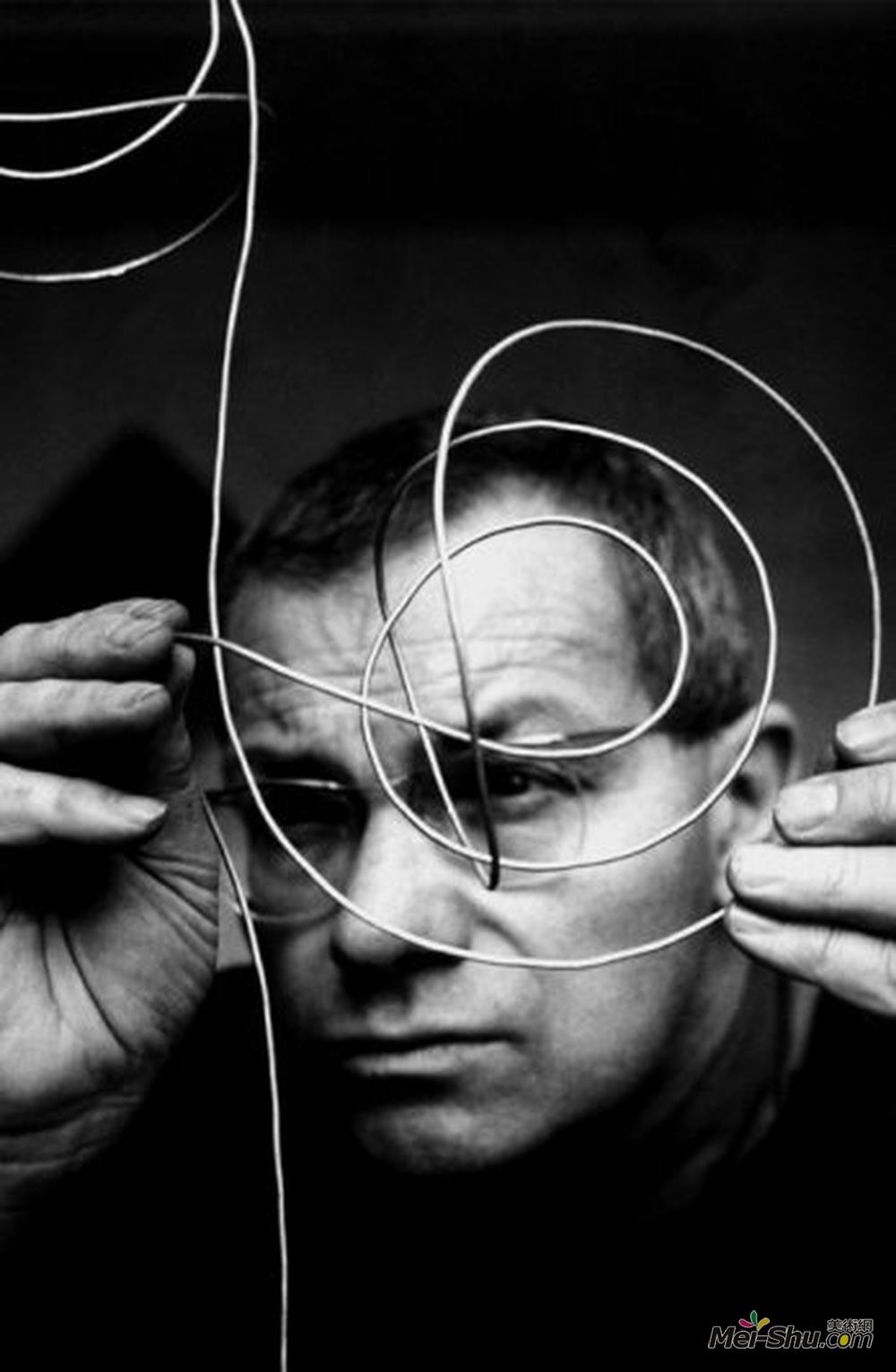
马克斯比尔(Max Bill)
艺术家: 马克斯比尔
生于: 1908年12月22日;瑞士温特图尔
卒于: 1994年12月09日;德国柏林
国籍: 瑞士
流派: 具体艺术
领域: 绘画,设计,建筑学,绘画
Max Bill是瑞士建筑师、艺术家、画家、字体设计师、工业设计师和平面设计师,被称为具体主义(混凝土艺术)的奠基人。
1924年至1927年,作为一名银匠的学徒后,比尔在许多教师的指导下在德绍包豪斯大学学习。从1927到1929年间,Wassily Kandinsky、保罗·克利和Oskar Schlemmer,后来移居苏黎世。
在为现代建筑建造的图形设计工作之后,他在ZuriCH H&AM. 246;NGG建造了自己的第一部作品,自己的房子和工作室(1932—3)。从1937起,他是瑞士艺术家安联集团的主要推动者。比尔被认为是20世纪50年代开始的瑞士平面设计的最具决定性的影响,他的理论写作和进步工作。他与现代运动时代的联系给了他特殊的权威。作为一个工业设计师,他的作品以清晰的设计和精确的比例为特征。作为设计师和艺术家,比尔试图创造视觉上代表二十世纪初的新物理学的形式。他试图创造物体,使新的形式科学可以被感官理解:那是一种具体的艺术。因此,比尔并不是一个理性主义者——正如典型的思想——而是一个现象学家。作为具体艺术最终表达的理解者。在这种方式下,他并没有像鲍豪斯理论那样重新诠释。然而奇怪的是,比尔和39岁的批评家们还没有真正领会这一根本问题。
1944,比尔成为苏黎世艺术学院的教授。他于1953创立了乌尔姆设计学院。比尔是1967年至1974年在汉堡州立大学霍奇舒勒分校任教授、环境设计系主任。1973,他成为布鲁塞尔佛兰芒皇家科学、文学和美术学院的副会员。1976,他成为柏林艺术学院的一员。除了教学之外,比尔还广泛地撰写和讲授艺术、建筑和设计,出席世界各地的研讨会和设计会议。尤其是,他写了关于柯布西耶、康定斯基、路德维希·密斯·范德罗和艺术理论的书。
他在S& o Paulo现代艺术博物馆1951年的回顾会很有影响,帮助巴西先锋派的诞生,这种先锋派最终将从确定性转变为艺术理论。一种更宽松、更有创意的形式——新混凝土主义。
比尔在柏林泰格尔机场心脏病发作中倒塌,在送往医院的途中死亡。他85岁,住在Zumikon,一个Z和252;富饶的郊区。
Artist :Max Bill
Additional Name :Max Bill
Born : Winterthur, Switzerland
Died : Berlin, Germany
Nationality :Swiss
Art Movement :Concrete Art (Concretism)
Field :painting,design,architecture,drawing
Max Bill was a Swiss architect, artist, painter, typeface designer, industrial designer and graphic designer, known as the founder of Concretism (concrete art).
After an apprenticeship as a silversmith during 1924-1927, Bill took up studies at the Bauhaus in Dessau under many teachers including Wassily Kandinsky, Paul Klee and Oskar Schlemmer from 1927 to 1929, after which he moved to Zurich.
After working on graphic designs for the few modern buildings being constructed, he built his first work, his own house and studio (1932–3) in Zurich-Höngg. From 1937 onwards he was a prime mover behind the Allianz group of Swiss artists. Bill is widely considered the single most decisive influence on Swiss graphic design beginning in the 1950s with his theoretical writing and progressive work. His connection to the days of the Modern Movement gave him special authority. As an industrial designer, his work is characterized by a clarity of design and precise proportions. As a designer and artist, Bill sought to create forms which visually represent the New Physics of the early 20th century. He sought to create objects so that the new science of form could be understood by the senses: that is as a concrete art. Thus Bill is not a rationalist -as is typically thought- but rather a phenomenologist. One who understands embodiment as the ultimate expression of a concrete art. In this way he is not some much extending as re-interpreting Bauhaus theory. Yet curiously Bill's critical interpreters have not really grasped this fundamental issue.
In 1944, Bill became a professor at the school of arts in Zurich. He co-founded in 1953 the Ulm School of Design. Bill was a professor at the Staatliche Hochschule für Bildende Künste Hamburg and chair of Environmental Design from 1967 to 1974. In 1973 he became an associate member of the Royal Flemish Academy of Science, Literature and Fine Art in Brussels. In 1976 he became a member of the Berlin Academy of Arts. In addition to his teaching, Bill wrote and lectured extensively on art, architecture and design, appearing at symposiums and design conferences around the world. In particular, he wrote books about Le Corbusier, Kandinsky, Ludwig Mies van der Rohe, and artistic theory.
His 1951 retrospective at the São Paulo Museum of Modern Art was highly influential, helping the birth of a Brazilian avant-garde that would eventually move from concretism to a looser, more creative form - neo-concretism.
Bill died en route to a hospital after collapsing from a heart attack at Berlin Tegel Airport. He was 85 and lived in Zumikon, a Zürich suburb.